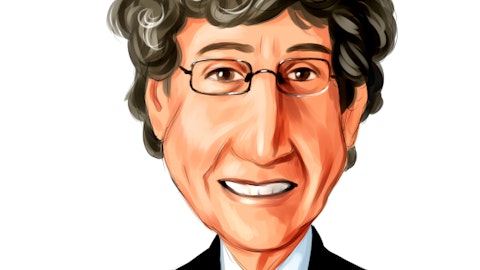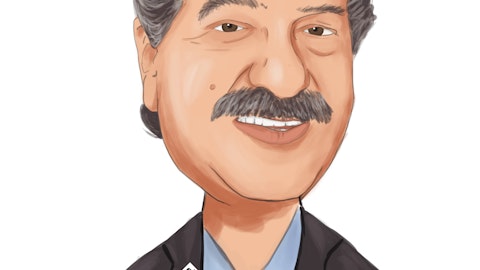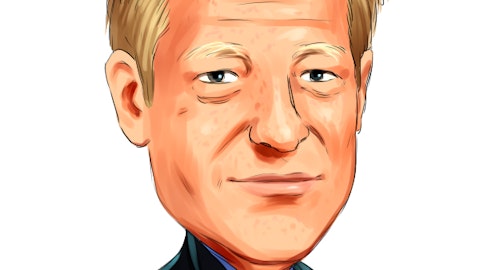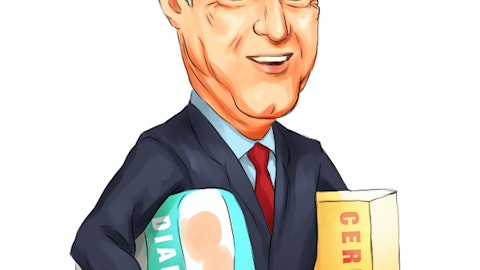Frank Schiraldi: Got you, okay, that makes sense. And then in terms of the excess liquidity put on the books, obviously, that’s less important to the bottom-line and NII. But I’m just wondering, I assume you would expect on an average basis there to be more cash and more borrowings on the book through the second quarter than the first quarter. So I’m just wondering, first of all, if that’s the case and then second of all, if that’s factored into your expectations on when you really talk about that 15 basis points margin conversion.
Pat Barrett: I think you’re right about that, Frank, that is the case, and it is reflected. So we expect that probably many of us will remain more liquid in the coming months.
Frank Schiraldi: Okay. And then just lastly, I mean, certainly recognize that prudence on the liquidity and capital front is kind of the most important thing in this environment, but I think you guys have provided pretty good detail and proof on the health of liquidity and capital levels. So just kind of turning back to return do you — when you talk about the operating leverage strategies that are going be put in place through the end of this year and into 2024. How do you think about profitability. Do you think that gets you back, I would imagine, ROA dips below 1% here, just given continued — some continued margin compression we’re talking about here, but do you think that gets you back to a 1% ROA or maybe just how you think about returns in general here?
Pat Barrett: I’d hesitate to give you a date on that, Frank, but we’re obviously running the company to have returns better than a 1% ROA over time and we’re working on a path to get there, it’s a little uncertain with the rate environment. It’s much more certain about kind of operating expenses and leverage. We feel very good about that. So we know what we can affect in terms of our levers, but we need a little bit of cooperation from the rate cycle at some point.
Frank Schiraldi: Okay. All right, great. Thank you guys.
Pat Barrett: Thanks, Frank.
Operator: Our next question comes from Daniel Tamayo from Raymond James. Daniel, your line is now open. Please go ahead.
Daniel Tamayo: Thank you. Good morning, everybody. Maybe we just follow-up on that profitability question, but just focusing on the expenses. How should we think about the path of overall expenses and the savings that you’re planning to make? I mean, is there any kind of a final point that you can help us put on how you’re thinking about that?
Pat Barrett: Yeah. I’ll take a shot at that. So the first quarter run rate is we think a good run-rate for the next couple of quarters. Hedging just a little bit as to whether it’s one or two. But because we may see some improvement in the third quarter, but let’s call it a three quarter run-rate through the third-quarter and then we think that we have a good opportunity to bring those down by at least 5% for the fourth quarter. Largely as we anticipate the completion of a lot of the external spend that has been in our run-rate going back to actually the fourth-quarter. We didn’t talk about this a couple of quarters ago, but we’ve actually been working on laying out opportunities and efforts needed to improve processes and platform and get better use out of our existing technology.
And so at a minimum, we think that that will fall-off, so professional fees are going to come — would come down by probably $3 million bucks a quarter. Beyond that, we think there are opportunities for efficiency in a wide range of areas. That we’re trying to balance against the need for continued productivity and growth in non-CRE lending, treasury management, resi-mortgage, C&I lending which brings good deposits along with it. But we do think that there’ll be some staffing efficiency as we exit and go — move into next year and we’ll continue. So I would say the total opportunity is more than 5%, but I’ll just keep it to 5% by fourth quarter of this year.
Daniel Tamayo: Okay. That’s great color Pat. And then you — I think you guys said you’re expecting more savings in 2024 as well.
Pat Barrett: Correct. I’m just — it’s a little early for us to pin down on all that. I think next quarter we’ll be — we’ll be refining that each quarter as we move along. And don’t forget though that. I shouldn’t say — don’t forget that at the same time we’ve got growth initiatives, working to expand capabilities in originate and sell mortgage business as well as growth in C&I and treasury management deposit gathering business. So, all of my comments would be net of any required investments that we would have to make. So these are absolute comments.
Daniel Tamayo: Okay. All right, that’s great. I appreciate it. And then secondly, just on the loan growth, I think you made a comment that you’re expecting that to be low going-forward. If you could provide any more color or detail around what you’re thinking when you made that comment that would be great.
Joe Lebel: Daniel, it’s Joe Lebel. I think the easiest way to describe it is, you support your customer base. We’re still seeing loan activity. You can see it evidenced by the pipeline. You’re also seeing it at higher rates, you can see it in the pipeline. We’re well into the sevens in the pipe in terms of average rate. I think our approach has been consistent, which is, pricing discipline, credit discipline, and that’s going to cause some ups and downs intra-quarter around what you can do and what you can’t do and I think we support the existing clients, we look for new clients and if good opportunities come up, we’ll do them. And it also gives us a chance to look at our existing book and make determinations about what still fits and what doesn’t fit. So, I do think you’ll see some unevenness. There may be quarters where you have growth, there may be some quarters where you see some flatness.
Daniel Tamayo: Okay, all right. That’s helpful. I appreciate it. I’ll step-back.
Pat Barrett: Thank you.
Operator: Our next question comes from David Bishop from Hovde Group. David, your line is now open. Please go ahead.
David Bishop: Yeah, good morning, Chris
Christopher Maher: Good morning, David.
David Bishop: Chris, a question for you in terms of just the macro environment. Obviously, the stress ten fall off from signature bank and maybe less so for your market Silicon Valley and any impact in terms of the potential or did you move over any new relationship either deposits or loans or relationship managers, maybe sort of any near-term impact from that first.





